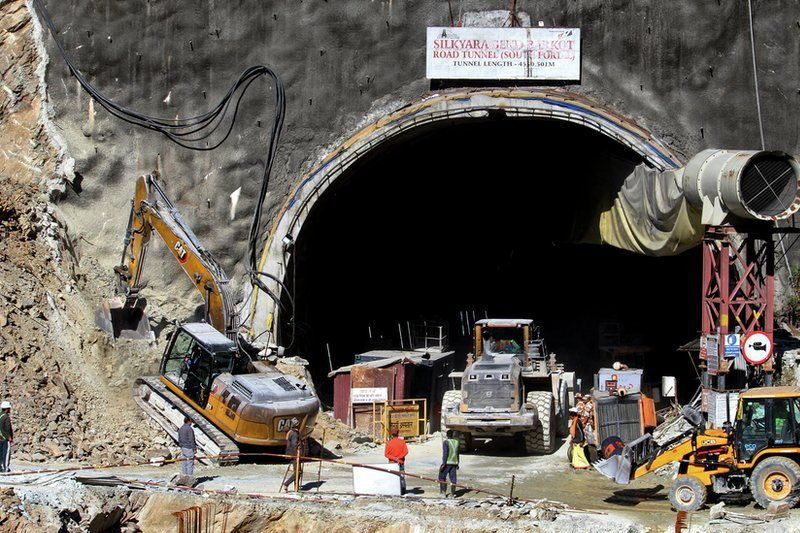
‘Only 2 Metres Left’ To Reach Trapped Labourers: Uttarakhand Tunnel Rescue Highlights
After 17 days of struggle, the end seems to be in sight as the National Disaster Management Authority (NDMA) has said only 2 metres of drilling is left for the rescuers to reach the 41 trapped labourers. It is estimated to take 3 to 5 minutes to pull out each individual.
A medical team and ambulances have arrived at the spot to rush the labourers to a community health centre. Rat-hole mining commenced Monday evening as the rescue work entered its 16th day. Rescuers are now waiting to pull out the 41 people with the help of wheeled stretchers.
The task of laying pipes in the Silkyara-Barkot tunnel has been completed. Uttarakhand’s top elected official, Chief Minister Pushkar Singh Dhami, lauded the “tireless work of all the rescue teams” in a post on social media, saying “soon all the labour brothers will be taken out.”
The collapse is believed to have been triggered by a landslide in the unstable Himalayan region. Rescuers had tried to drill through the debris using a large auger machine, but it became stuck in the rubble on Friday and had to be broken down and removed.
Uttarakhand Tunnel Rescue: All You Need To Know About Rat-Hole Mining
A small pipe was drilled into the under-construction tunnel in Uttarkashi on the first day of the collapse, enabling the rescue personnel to provide the labourers with sufficient oxygen, food and medicine. Rat-hole mining has been the latest technique used to bring the people out.
It is a primitive method of manual coal extraction that involves digging very native, vertical shafts into the earth through which miners descend to extract coal. The mineral is then manually extracted using primitive tools such as shovels and pickaxes.
Rat-hole mining is an officially banned method as experts believe it is damaging to the environment. The method has also been linked to soil erosion, deforestation, acidification of waterbodies and disruption of local ecosystems.
India’s National Green Tribunal banned rat-hole mining across the country in 2014 owing to the unsafe labour conditions and associated environmental impacts. But the method remains prevalent in parts of India in the absence of viable alternative livelihoods for locals.




